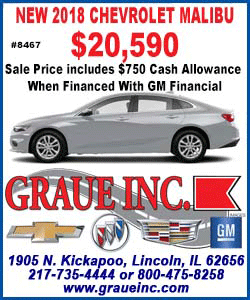U.S. airlines tap army helicopter pilots to ease
shortage
 Send a link to a friend
Send a link to a friend
 [January 23, 2019]
By Tracy Rucinski [January 23, 2019]
By Tracy Rucinski
CHICAGO (Reuters) - U.S. Army pilot Shaun
Perez spent ten hours flying an Apache helicopter over Afghanistan,
providing gun cover for Special Forces soldiers on the ground as they
hunted for high-value targets, guns and weapons.
Returning to his base at dawn, he donned a fresh uniform before shutting
himself into a small room to secure the next stage of his career - as a
commercial airline pilot.
He would win the job in a video interview that day in August 2017,
joining hundreds of other U.S. military helicopter pilots who have taken
attractive offers from domestic airlines trying ease a global pilot
shortage.
Perez took advantage of one of the tightest labor markets in the United
States, created by years of slow hiring, a wave of pending retirements
at major U.S. airlines, and Federal Aviation Administration rules that
in 2013 increased the number of required training hours from 250 to
1,500.
The industry's aggressive recruitment of military helicopter pilots is
one of the most striking examples yet of the contortions required to
quickly train new commercial aviators since the FAA increased the
minimum flying requirement. The pilot shortage threatens the industry's
growth just as travel demand booms.

Airlines have been forced to more than double starting salaries to
$54,000, excluding bonuses, in 2018 from $21,000 a decade ago, according
to aviation consultant Kit Darby. (Graphic: https://tmsnrt.rs/2RPIG3S)
Perez, 38, now flies under the banner of United Express, the regional
branch of United Airlines, at a strong starting salary with his training
costs covered.
Ten U.S. regional carriers are offering helicopter pilots like Perez up
to $50,000 to pay for commercial airplane training, and in some cases
additional signing bonuses, according to a survey by Reuters.
"This is the first time that the industry is committing direct funds,
basically a subsidy, to get that training quickly," said Bryan Simmons,
president of Coast Flight Training, which pioneered the so-called rotor
transition program for helicopter pilots with American Airlines Group
Inc's regional subsidiary, Envoy, in San Diego.
Perez was offered $38,000 by Trans State Airlines for training that cost
him $20,000. He got to keep the difference, and within months of leaving
Afghanistan, was flying a 50-seater regional passenger jet.
He said he is taking home about $3,200 a month with the prospect of
earning far more once he moves up to a large U.S. carrier. (Graphic:
https://tmsnrt.rs/2NVcZoB )
"Even if you had to pay $100,000 for training, you're going into a field
where you know you're going to make that money back and more," Perez
said.
Regional airlines' helicopter transition programs offer flow-through
agreements with mainline carriers, providing new pilots an interview -
and in some cases, a job - with a major within a few years.
To fly a multi-engine passenger jet - which can travel about five times
faster than helicopters and has more complex control panels - helicopter
veterans need to complete fixed-wing FAA ratings and required flight
time.
The transition feels natural to Perez.
"We took multiple ground fire; we had hard missions," he said. "But once
we step into that (airline) cockpit, we're humble and we work hard."
CLEVER WORKAROUND
A key reason airlines are chasing military pilots is because the new FAA
training rules only require them to have 750 hours of additional
training, half the 1,500 required of civilians seeking a commercial
pilot license.
Military helicopter pilots from the military only need additional
training in flying fixed-wing aircraft, which takes about 90 days. For
civilians, obtaining a commercial pilot license can take years and cost
more than $100,000.
[to top of second column] |

Military helicopter pilot Henery Jacobs looks over a fixed wing
aircraft at Coast Flight Training in San Diego, California, U.S.,
January 15, 2019. Picture taken January 15, 2019. REUTERS/Mike Blake

"We've stumbled upon the quickest solution to the pilot shortage," said Erik
Sabiston, an Army veteran turned commercial pilot who founded Rotary to Airline
Group in Dec. 2017 to help helicopter, or rotor, pilots make the transition to
passenger jets. The not-for-profit group, with more than 7,000 pilots and
mechanics, also assists airlines in designing rotor transition programs.
American Airlines' regional carrier Envoy said more than a quarter of its 701
new pilots in 2018 came from military helicopters, compared with 11 percent in
2017 and 5 percent in 2016. It plans to hire 626 pilots in 2019, with about a
quarter of those expected to come through its rotor program.
"It's an untapped pool of pilots that hadn't been brought to anyone's attention
before," Envoy pilot recruiter Megan Liotta said.
Former military helicopter pilots generally adapt quickly to the differences in
a jet's speed and controls and have a higher success rate in landing jobs than
other aspiring aviators, recruiters said.
"They come from an environment that has trained them to think on their feet and
be very adaptable," said David Tatum, director of pilot recruitment for
American.
For former military pilots, the surge in interest from airlines helps replace
the shrinking number of jobs flying helicopters to offshore oil rigs.
A Envoy pilot hired today makes about $60,000 or more in their first year as a
first officer. They can expect to upgrade to captain, at a higher pay scale,
within two years before moving on to No. 1 U.S. carrier American within six
years, the company said. Top-end salaries at American surpass $300,000.
RISING SALARIES, COSTS
As regional airlines pay more to attract and retain pilots, their services are
becoming more expensive for major national airlines that have increasingly used
the regionals for domestic routes to cut costs.
Under those contracts, called capacity purchase agreements, labor costs are
factored into the prices that the mainline carriers pay the regionals for their
service.
"Their cost saving method is losing a bit of steam," said Andrew Watterson,
chief revenue officer for Southwest Airlines Co, which does not partner with
regional carriers.
Aviation consultant Samuel Engel said a 50 percent increase in pilot costs at
the regional carriers would amount to a 7.7 percent increase in overall costs
per seat-mile on a 70-seater, erasing some of the cost advantage of regional
aircraft on a per-seat-mile basis.

So far, airlines have succeeded in passing on rising costs to passengers, often
through extra charges for luggage or preferred seating. But analysts have
questioned their ability to continue raising fees.
Boeing Co estimates a need for 790,000 new pilots in the commercial aviation,
business aviation, and civil helicopter industries over the next two decades.
"The problem is," Darby said, "we're still not creating enough pilots ... to
meet the need."
(Reporting by Tracy Rucinski; Editing by Tim Hepher and Brian Thevenot)
[© 2019 Thomson Reuters. All rights
reserved.] Copyright 2019 Reuters. All rights reserved. This material may not be published,
broadcast, rewritten or redistributed.
Thompson Reuters is solely responsible for this content. |